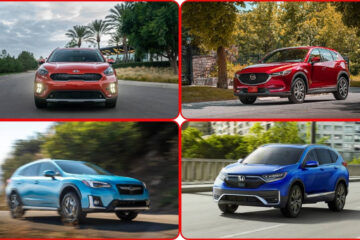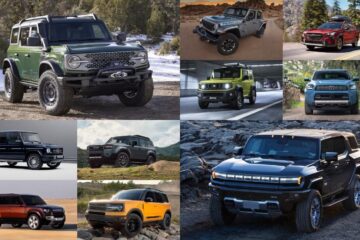As a household name worldwide and a leader in automotive innovation, Toyota is making some big moves for its 2025 lineup. In making that strategic shift towards hybrid and electric vehicles (EVs), the automaker is axing some prominent names. This change symbolizes a new vision for Toyota—one that increasingly emphasizes sustainability, better efficiency, and futuristic technology.
This article examines some Toyota models being cut for 2025, the rationale behind the decisions, and part of a growing landscape reflected in the broader auto industry. In short, if you are a brand fan or on the hunt for a new vehicle, you should take note of these changes.
Must Check: 2025 Toyota Crown vs. 2025 Toyota Camry: What’s the Smarter Buy?
Toyota GR Supra MkV: A Legendary Exit

The Toyota GR Supra MkV has some serious history behind it, but 2025 will mark the last year for the next-gen sports car nameplate. The Supra MkV that got enthusiasts all hot and sweaty was back originally through a collaboration with BMW in 2019, giving tuners clear lines, razor-sharp handling, and forced induction.
Toyota will send the Supra out with a bang in 2026, creating a “Final Edition” run for the model. It will include the following features:
- 19-inch matte black wheels
- A spoiler ducktail in carbon fiber
- Improved traction and stability control systems
- The same 382-hp 3.0-liter twin-turbo inline-six engine
Only 1,300 units will be produced, making it a limited run. Just 300 will go to Europe and Japan. However, this final run of the iconic performance car might be the last for collectors and diehard Supra fans.
Why is the Supra Going Away? It is well-liked yet niche. Toyota is refocusing its efforts on electrification, with plans for 15 new EVs by 2027 and the capacity to build one million EVs a year. In such a future, gas-only sports cars such as the Supra will, in the minds of some, be a dying breed.
Toyota Venza: Making Room for the Crown Signia

The Toyota Venza is another model that bites the dust. However, this midsize crossover SUV was an attractive design with solid fuel economy despite its hybrid-only makeup upon its reintroduction for the 2020 model year. Still, the Venza never took off in sales, and it was primarily eclipsed at dealerships by the RAV4 Hybrid and Highlander Hybrid despite its premium interior and tech-flavored offerings.
Toyota is discontinuing the Venza. It is giving up its lineup’s lower-end luxury crossover SUV space to accommodate the all-new 2025 Toyota Crown Signia hybrid multifunction vehicle. The Crown Signia shares underpinnings with the Toyota Crown sedan, providing a better balance of driving fun and refinement.
This change illustrates Toyota’s move to consolidate its SUV offerings, targeting changing consumer tastes away from traditional compact models and, particularly, toward more premium electrified crossovers.
Toyota C-HR: Exiting the North American Market

Toyota C-HR was dropped in North America in 2022, though the small crossover remains available in international markets like Europe and Japan. For 2025, no C-HR return. Launched in 2018, this attractive small SUV was aimed at young buyers with its striking looks and sprightly handling.
On the other hand, the C-HR didn’t offer AWD and was subsequently condemned for its small interior volumes and underwhelming performance. The Corolla Cross, with its superior utility and optional AWD, was the final nail in the coffin for the C-HR in the U.S. and Canadian markets.
Toyota is still making it smaller, eliminating redundancies in its schedule, and making it more hybrid-powered practical, all while officially discontinuing it in the U.S. market.
Toyota Avalon: The Predecessor to the Crown

The Toyota Avalon also merits inclusion on this list, although it was discontinued after the 2022 model year. The Avalon used to be Toyota’s flagship sedan, and it was synonymous with comfort, refinement, and longevity.
That paved the way for the Toyota Crown, a new hybrid-powered, high-riding sedan that debuted in 2023. The Crown is part of the new wave of Toyota’s premium passenger cars, and with its higher ride height, cutting-edge styling, and hybrid familiarity (it offers AWD, too), it offers a taste of the future.
Toyota’s full-scale reinvention of its sedan lineup began right when the Avalon exited Stage Left in many respects.
Read More:
- Which 2025 Toyota Corolla trim is really worth every penny?
- 2026 Toyota RAV4 Redesign – Updates, Changes, and Release Date!
- 2025 Toyota Sienna: 4 Reasons It’s a Winner, 1 That Might Make You Pause
Toyota’s Multi-Pathway Strategy: Why These Cuts Matter
But why is Toyota killing off these models now?
This comes as part of the brand’s long-term electrification strategy. While its competitors only chase EVs, Toyota doubles down on hybrids and plug-in hybrids. It refers to this as the “multi-pathway approach,” which involves:
- Traditional hybrids (HEVs)
- Plug-in hybrids (PHEV)
- Battery electric vehicles (BEVs)
- Hydrogen fuel-cell vehicles (FCEVs)
Toyota says this strategy gives flexibility in various markets, particularly in places where EV charging infrastructure is lacking or too expensive for the average buyer.
Hybrids are hitting home runs. As of mid-2024:
- Of Toyota’s global sales last year, 37% were of hybrid vehicles, a jump from just 9% in 2018.
- RAV4 Hybrid and Highlander Hybrid continue to be best sellers in their segments.
- They lauded the 2024 Prius Prime for its EV range, fuel economy, and seating.
With EV take-up slowing due to high costs and charging anxiety, hybrids make a pragmatic leapfrog solution. That makes the retirement of select gasoline-only models—and some hybrids with weaker demand—a sensible next step.
Consumer and Market Reactions
- Reactions to Toyota’s discontinuation plans have been mixed.
- It seems enthusiasts are the most disappointed, who have taken to the GRM, Reddit, and SupraMKV forums to reminisce and vent about the Supra’s exit.
- Conversely, Toyota loyalists appear to be pretty hyped about the Crown Signia and the ongoing investment in hybridism.
- Industry experts appreciate the changes.
Expect other automakers — Honda and Hyundai, for example — to follow quickly, quickening their pivot towards the hybrid crossover and electric vehicle that outpaces potential regulatory setbacks and consumer shifts.
Looking Ahead: Toyota’s 2025 and Beyond
This focused approach is creating a pathway for Toyota’s innovative future. Expect everything from the new 2025 Prius to the new Crown, the new Corolla Cross Hybrid, and the new bZ electric series to be in the spotlight.
Toyota also plans to:
- Scale up manufacturing capacity for batteries
- Create next-generation solid-state batteries
- Roll out additional AI and safety-oriented technologies throughout its entire range.
Those streaming out the door — vehicles like the GR Supra, Venza, and C-HR — have served their purpose in Toyota’s travel log. But their departures usher in a new, charged-up era.
Toyota cuts models like the GR Supra MkV, Venza, and others as a fat trim and an evolution. Toyota has also shifted toward hybrid technology to fine-tune its SUV offerings while slowly piecing together its electric vehicle portfolio ahead of an industry-changing with a focus on efficiency, sustainability, and innovation. Saying farewell to iconic models is a bittersweet moment, but it’s all part of progress. Amid market evolution and a desire for a greener future, Toyota is finding its station on the car shelves, together with the sort of vehicles it hopes to offer for many years.




